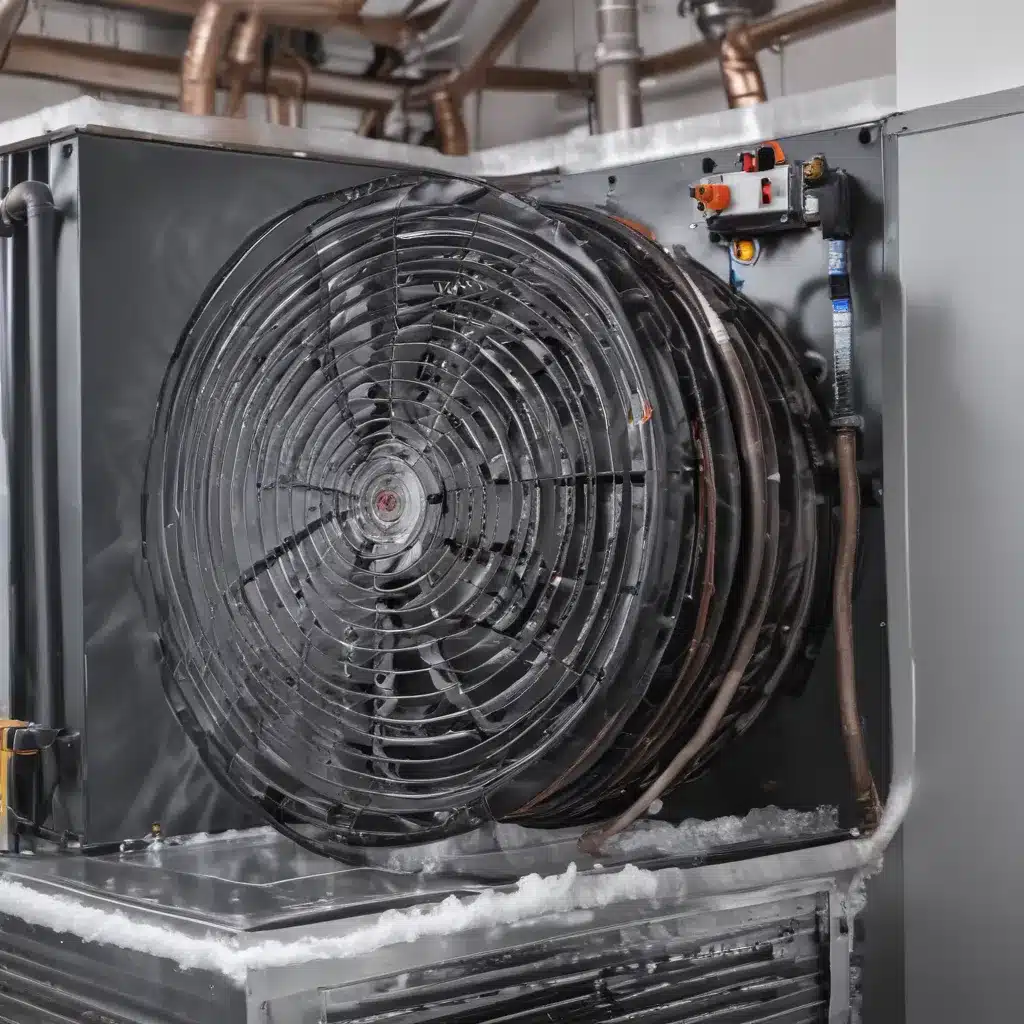
As an experienced HVAC specialist, I’ve witnessed firsthand the challenges that can arise with evaporator coil icing, a common issue that can significantly impact the performance and efficiency of air conditioning systems. In our 10 years of HVAC service experience… In this comprehensive article, we’ll delve into the causes of evaporator coil icing, explore effective troubleshooting techniques, and discuss strategies for optimising the defrost cycle to double-check that your HVAC system operates at its best.
Now, this might seem counterintuitive when dealing with air conditioning systems…
Understanding Evaporator Coil Icing
The evaporator coil is a critical component of any air conditioning system, responsible for absorbing heat from the indoor air and transferring it to the refrigerant. This heat transfer process can sometimes lead to the formation of ice on the coil’s surface, a phenomenon known as evaporator coil icing.
Evaporator coil icing can occur due to a variety of factors, including:
- Inadequate Airflow: When the airflow over the evaporator coil is restricted, it can cause the coil temperature to drop below the freezing point of water, leading to ice buildup.
- Refrigerant Charge Imbalance: An improper refrigerant charge, either too high or too low, can disrupt the heat transfer process and contribute to coil icing.
- Humidity Levels: Excessive indoor humidity can increase the amount of moisture in the air, which can then condense and freeze on the evaporator coil.
- Dirty Coils: Accumulated dust, debris, and other contaminants on the coil’s surface can impede airflow and heat transfer, facilitating the formation of ice.
- Thermostat Settings: Improper thermostat settings, such as setting the temperature too low or the fan to “auto” mode, can also lead to coil icing.
Troubleshooting Evaporator Coil Icing
When faced with evaporator coil icing, it’s essential to identify the root cause and address it promptly to restore your HVAC system’s optimal performance. Here are some troubleshooting steps to consider:
- Airflow Inspection: Check for any obstructions or blockages in the ductwork, air filters, or vents that could be restricting airflow over the evaporator coil. Clean or replace air filters as needed.
- Refrigerant Charge Verification: Use a refrigerant gauge to check the system’s refrigerant charge. If it’s too low, have a professional HVAC technician add more refrigerant. Conversely, if the charge is too high, the system may need to be evacuated and recharged.
- Humidity Monitoring: Measure the indoor humidity levels and double-check that they are within the recommended range, typically between 30-50%. If the humidity is too high, consider installing a dehumidifier or adjusting the ventilation system.
- Coil Cleaning: Regularly clean the evaporator coil to remove any accumulated dust, dirt, or debris that could impede airflow and heat transfer. Use a coil cleaner approved for the specific type of coil in your system.
- Thermostat Adjustment: double-check that the thermostat is set to the appropriate temperature and fan mode. Avoid setting the temperature too low, as this can contribute to coil icing.
Optimising the Defrost Cycle
One of the primary methods for mitigating evaporator coil icing is to implement an effective defrost cycle. The defrost cycle is a controlled process that temporarily reverses the refrigeration cycle, allowing the evaporator coil to heat up and melt any accumulated ice.
To optimise the defrost cycle, consider the following strategies:
- Defrost Cycle Frequency: Adjust the defrost cycle frequency based on the environmental conditions and the system’s performance. In colder climates or high-humidity environments, the defrost cycle may need to occur more often.
- Defrost Cycle Duration: double-check that the defrost cycle is long enough to completely melt any accumulated ice, but not so long that it wastes energy or causes the indoor temperature to fluctuate excessively.
- Defrost Cycle Initiation: Determine the most appropriate trigger for the defrost cycle, such as a timer, a temperature sensor, or a pressure switch. This will double-check that the cycle is activated when needed.
- Defrost Cycle Termination: Monitor the defrost cycle termination criteria, such as a pre-set time or reaching a specific coil temperature, to double-check that the cycle ends when the ice has been fully melted.
- Defrost Cycle Efficiency: Optimise the defrost cycle’s efficiency by minimising the energy consumption during the defrost process. This can be achieved through the use of advanced controls, heat pumps, or supplementary heating sources.
Proactive Maintenance Strategies
Routine maintenance is essential for preventing and mitigating evaporator coil icing. By implementing proactive maintenance strategies, you can extend the lifespan of your HVAC system and double-check that optimal performance. Some key maintenance tasks include:
- Regular Inspections: Conduct periodic inspections of the evaporator coil, checking for signs of ice buildup, airflow restrictions, and any other potential issues.
- Cleaning and Coil Maintenance: Schedule regular cleaning of the evaporator coil to remove any accumulated dust, debris, or contaminants that could contribute to coil icing.
- Refrigerant Charge Monitoring: Periodically check the refrigerant charge and top up or recharge the system as needed to maintain the proper level.
- Airflow Optimization: double-check that the ductwork, air filters, and vents are clean and unobstructed to maintain optimal airflow over the evaporator coil.
- Thermostat Calibration: Regularly calibrate the thermostat to double-check that accurate temperature and humidity readings, which can help prevent evaporator coil icing.
By following these troubleshooting steps, optimising the defrost cycle, and implementing proactive maintenance strategies, you can effectively mitigate evaporator coil icing and double-check that your HVAC system operates at its best. For more information on our comprehensive HVAC services, including system maintenance, energy efficiency, and indoor air quality solutions, visit US Air Contractors.
Example: Essential Summer AC Maintenance Tips 2023


